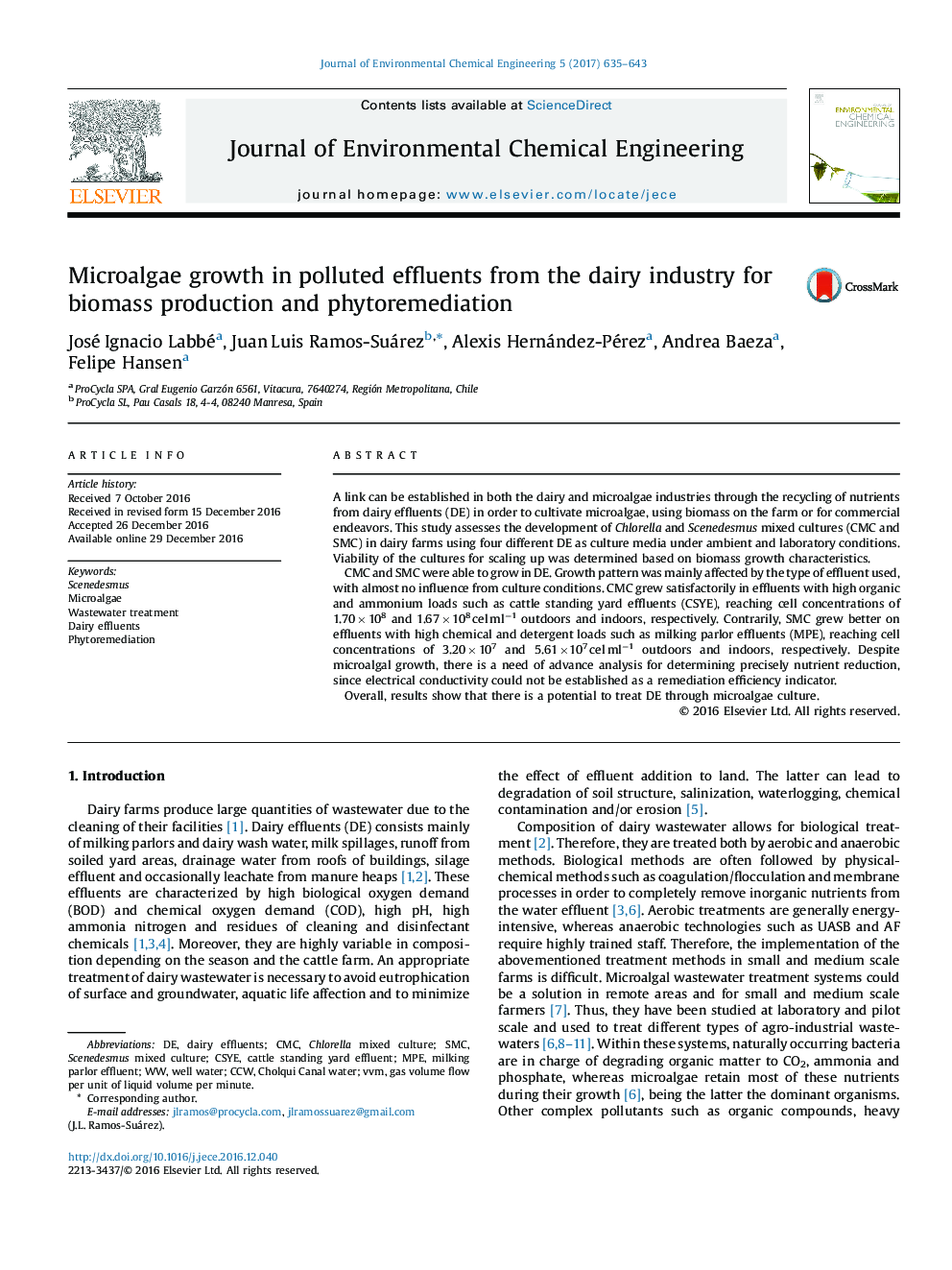| Article ID | Journal | Published Year | Pages | File Type |
|---|---|---|---|---|
| 6477444 | Journal of Environmental Chemical Engineering | 2017 | 9 Pages |
â¢Dairy effluents supported Scenedesmus (SMC) and Chlorella mixed cultures (CMC).â¢CMC showed a good growth in effluents with high organic matter and nutrient load.â¢SMC developed better in effluents with high chemical and detergent load.â¢SMC and CMC can be used for dairy effluents treatment.â¢Electrical conductivity cannot be used to determine remediation capacity.
A link can be established in both the dairy and microalgae industries through the recycling of nutrients from dairy effluents (DE) in order to cultivate microalgae, using biomass on the farm or for commercial endeavors. This study assesses the development of Chlorella and Scenedesmus mixed cultures (CMC and SMC) in dairy farms using four different DE as culture media under ambient and laboratory conditions. Viability of the cultures for scaling up was determined based on biomass growth characteristics.CMC and SMC were able to grow in DE. Growth pattern was mainly affected by the type of effluent used, with almost no influence from culture conditions. CMC grew satisfactorily in effluents with high organic and ammonium loads such as cattle standing yard effluents (CSYE), reaching cell concentrations of 1.70 Ã 108 and 1.67 Ã 108 cel mlâ1 outdoors and indoors, respectively. Contrarily, SMC grew better on effluents with high chemical and detergent loads such as milking parlor effluents (MPE), reaching cell concentrations of 3.20 Ã 107 and 5.61 Ã 107 cel mlâ1 outdoors and indoors, respectively. Despite microalgal growth, there is a need of advance analysis for determining precisely nutrient reduction, since electrical conductivity could not be established as a remediation efficiency indicator.Overall, results show that there is a potential to treat DE through microalgae culture.
